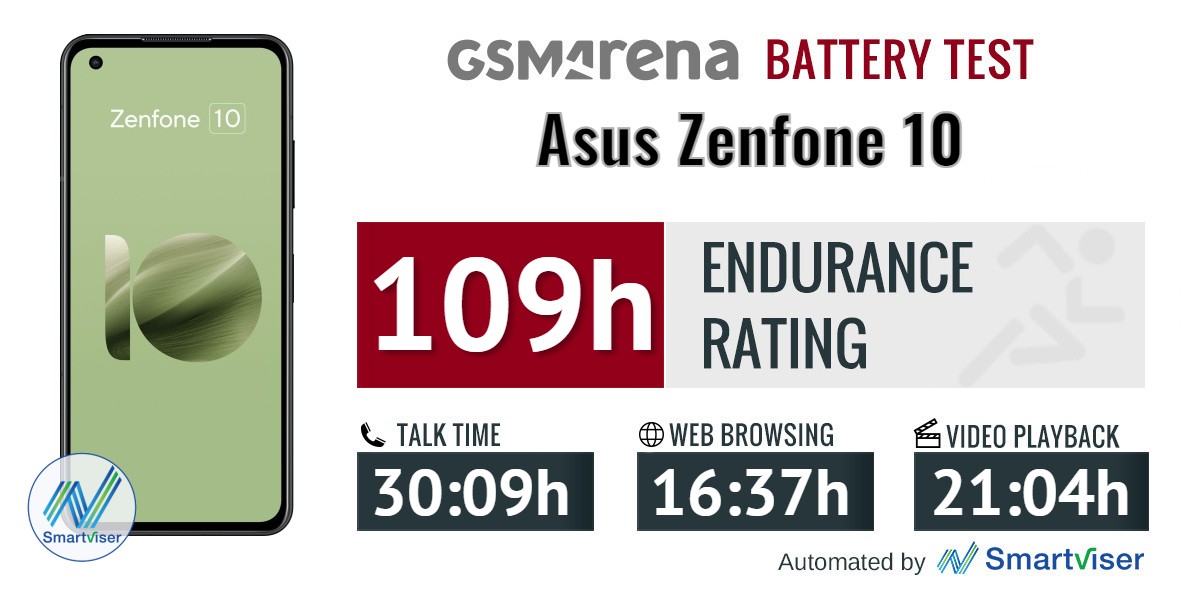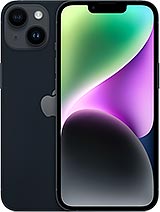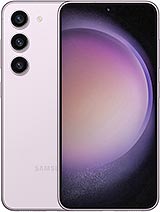Asus Zenfone 10 review

Same 5.9-inch diagonal, now up to 144Hz
You won't see major changes in the Zenfone 10's display when comparing to the previous generation - it's still a 5.9-inch OLED panel with a 1080x2400px resolution in a 20:9 aspect ratio. The one spec that's been improved is refresh rate, though you won't be getting the 144Hz maximum outside of games - the display is otherwise capped at 120Hz.

There aren't groundbreaking developments in brightness either - we measured 442nits when adjusting brightness manually, and just over 800nits in adaptive brightness mode with the phone placed under bright light. In that sense, the Zenfone 10 is now behind the curve, with competitors reaching a thousand, or even 1200nits. It's not that it's too dim out in the sunlight, it's just that others are brighter.
Color accuracy
Asus groups the Zenfone's color modes under the Splendid option in the display settings, which you may not think to look under, if this is your first encounter with a Zenfone. As usual, you get 4 preset color modes with an additional temperature slider, plus an extra 'Customized' mode with its own slider that essentially controls saturation.
All modes but Standard cover a wide gamut, while Standard is tailored for the narrower sRGB color space. Standard got us a very good average dE2000 of 1.8 - an improvement over last year's model, and Cinematic mode was similarly accurate for DCI-P3 content (1.9 average dE2000). Conversely, the default Optimal mode and Natural mode weren't particularly accurate, while also exhibiting strong blue shifts.
HDR and streaming
The Zenfone 10 supports HDR10 and HDR10+, but lacks Dolby Vision capability. We got HDR streams from YouTube, but Amazon Prime Video didn't appear to cooperate, and Netflix didn't give us HDR either. That could very well be due to the fact that we've been testing the Zenfone before its official release, so not all certifications and whitelistings have taken place yet. In any case, the Widevine L1 rating does mean you're getting FullHD versions of DRM-protected content, as expected.
Refresh rate
The 144Hz maximum refresh rate is one entry in a short list of generational improvements on the Zenfone 10, but you don't really get to experience it outside of games. For all other use cases, the 10 behaves like the 9 and has the same four modes - the Auto enabled by default and settings for 120Hz, 90Hz and 60Hz.

The 60Hz and 90Hz modes do lock the refresh rate at the respective setting. Indeed, the 90Hz mode doesn't have the phone dropping to 60Hz when idling, which we found a little odd on the Zenfone 9, but we're no longer surprised now that we see it on the 10.
There's some adaptive behavior in the other two modes, but it's not as fine and granural as on some of the contemporary flagships. A bit unusually (but well in line with the previous generation), the Auto mode will tend to maintain 90Hz most of the time, with no dropping to 60Hz. Unlike the 9, however, we didn't observe the Zenfone 10 to shoot to 120Hz for games that support high frame rate - apparently, Asus expects you to pick the refresh rate on a per game basis in the Game Genie utility.
The 120Hz mode will maintain the nominal refresh rate when you interact with the phone but will switch down to 60Hz when idling. If you're under a certain brightness threshold, there will be no downswitching, regardless of battery mode.
High frame rate gaming is possible on the Zenfone 10 - encouraged even. From the Game Genie utility, you can switch the refresh rate irrespective of the global setting, and you can get a frame rate counter as well. It's from here that you get to enable the 144Hz maximum value. Technically, you can call almost any app a 'game' by flicking its toggle in Game Genie, and that lets you enable 144Hz for that app in particular - for example, Chrome, if you so desire.
Battery life
Asus hasn't changed the battery capacity for this year's Zenfone and the 10 has the same 4,300mAh worth of power inside it. The Snapdragon 8 Gen 2 is a notably more frugal chip than the previous generation, however, and the Zenfone 9 was already a great performer in terms of longevity, so we expected solid numbers from the Zenfone 10 as well.
And as expected, the Zenfone 10 earns a respectable Active Use Score with impressive video playback runtimes and solid gaming score as well. In terms of browsing, the Zenfone 10 edges out the competition by a small margin. However, it's still not enough to dethrone the Sony Xperia 5 V, which boasts an impressive battery endurance.
Expand to reveal our legacy battery test (Endurance rating). How we test now.
Asus hasn't changed the battery capacity for this year's Zenfone and the 10 has the same 4,300mAh worth of power inside it. The Snapdragon 8 Gen 2 is a notably more frugal chip than the previous generation, however, and the Zenfone 9 was already a great performer in terms of longevity, so we expected solid numbers from the Zenfone 10 as well.
Indeed, we can report improvements in all active tests, with only standby taking somewhat of a hit. We clocked just over 30 hours of voice calls, which is a 4-hour increase over the 9's result. Almost 4 hours better is the video playback result as well, now at 21 hours and change. In web browsing, we recorded an increase of 1.5h, up to 16:37h.
All these improvements are mostly negated by the 20% shorter standby result (which isn't really half bad in itself). Still, at 109h, the Zenfone 10 does manage a longer overall Endurance rating than the 9, if only by a single hour.

Our battery tests were automated thanks to SmartViser, using its viSerDevice app. The endurance rating denotes how long the battery charge will last you if you use the device for an hour of telephony, web browsing, and video playback daily. More details can be found here.
Video test carried out in 60Hz refresh rate mode. Web browsing test done at the display's highest refresh rate whenever possible. Refer to the respective reviews for specifics. To adjust the endurance rating formula to match your own usage - check out our all-time battery test results chart.
Charging speed
Zenfones have shipped with the same 30W adapter for several generations now, and it's a nice USB Power Delivery unit. In our testing, the power meter peaked at just over 24W, which sounds like a reasonably close number to the rated charging capability.

In our testing, the Zenfone 10 exhibited a slightly different charging curve compared to the 9, taking a little longer to reach 100%, but climbing slightly more quickly at the early stages. All in all, both the 60% at the half-hour mark and the 1:21h time for a full charge are average results among potential rivals of the Zenfone, and on par with the Galaxy S23 numbers.
One of the big new additions to this year's Zenfone is wireless charging. A certification listing at the WPC website was nowhere to be found at the time of writing (nor are they particularly useful anyway), but Asus' specs say the Zenfone 10 should be able to take up to 15W of power through the induction coil on its back.
Among the many proprietary features in the Asus Android build is a set of charging settings meant to increase the battery's lifespan in the long run. One of them is Steady charging, which charges the battery at a flat rate instead of the usual 'super fast in the beginning, way slower at the end approach. There are two levels to it, and the base Steady charging works at 18W, while the Ultra Steady drops that to 10W, when using the supplied 30W adapter (that goes further down to 12W and 9W respectively, if you have an 18W PD charger).
There's also Scheduled charging which ensures that the battery will stay at 100% the minimum time by doing the final stages of the process just before your alarm goes off or before a predetermined time.
Alternatively, you can set a ceiling to the state of charge of 80% or 90%, so your battery doesn't have to spend any time at that 100% level which Lithium-Ion batteries don't feel too well at. Asus's testing indicates that after 500 charge cycles with the 80% limit, the battery will have only lost 7% of its initial capacity, compared to 15% if you let it go all the way up to 100%. It's useful if you like to keep your phone for as many years as it will last and/or if you're a habitual overthinker. You just need to remember to switch it off when you know you have a long day ahead of you.
Speaker test
The Zenfone 10 has a stereo speaker setup with one bottom-firing unit and another front-firing one at the top that srves double duty as an earpiece. The bottom speaker measures 11x15mm, so it's smaller than the one on the previous generation by a millimeter in each direction. The top unit is the same as before, at 10x12mm. The two speakers switch channels depending on the phone's orientation in landscape, while the top one gets the left channel when in portrait.


Bottom speaker • Earpiece/Top speaker
Asus' collaboration with Dirac continues and the Swedish sound researchers are responsible for the phone's tuning, with a focus on enhanced bass perception. Sound isn't quite as big as on the Zenfone 9, however, particularly in that lower frequency region. It's okay, it's just that the 9 is boomier than the 10, and in a good way. The Galaxy S23 sounds notably better across most music styles, though we'd still rank the Zenfone 10 higher than the Xiaomi 13 for sound quality.
In terms of measured loudness, the Zenfone 10 is on par with the previous generation and the Galaxy S23 and earns a 'Good' rating in our test. The Xiaomi 13 and the Motorola Edge 40 are a little louder, making it into the 'Very Good' category.
Use the Playback controls to listen to the phone sample recordings (best use headphones). We measure the average loudness of the speakers in LUFS. A lower absolute value means a louder sound. A look at the frequency response chart will tell you how far off the ideal "0db" flat line is the reproduction of the bass, treble, and mid frequencies. You can add more phones to compare how they differ. The scores and ratings are not comparable with our older loudspeaker test. Learn more about how we test here.
Perhaps around here is a good point to mention that The Zenfone 10's handling of volumes is a bit unorthodox. If you opt for the Asus Optimized UI, you can have certain volumes all linked together and controlled at the same time by the volume rocker or main slider. You can choose to decouple some sounds from the slider, and you can set separate upper limits to each of the linked types of sounds. The in-call volume is always a separate setting.
It's when you opt out of the Asus slider solution that you get to enable an Outdoor mode. That gives the midrange a significant boost, and the midrange is where loudness lives (as we've heard at least one sound engineer proclaim). So, in this mode, the Zenfone 10 scores an 'Excellent' rating for loudness thanks to a -22.3LUFS result. The flipside is a less pleasing and less 'musical' sound quality.
Reader comments
- snased
- 16 Mar 2025
- JaE
they added it as a normal android setting, so yes it has bypass charging, no it's not in game genie
- perre
- 03 Nov 2024
- SH}
In my country, Spain, its version records callings!!! A feature I missed from my Redmi Prime 4 years ago.
- Anonymous
- 12 Oct 2024
- gL9
Maybe Xperia 1 VI

















